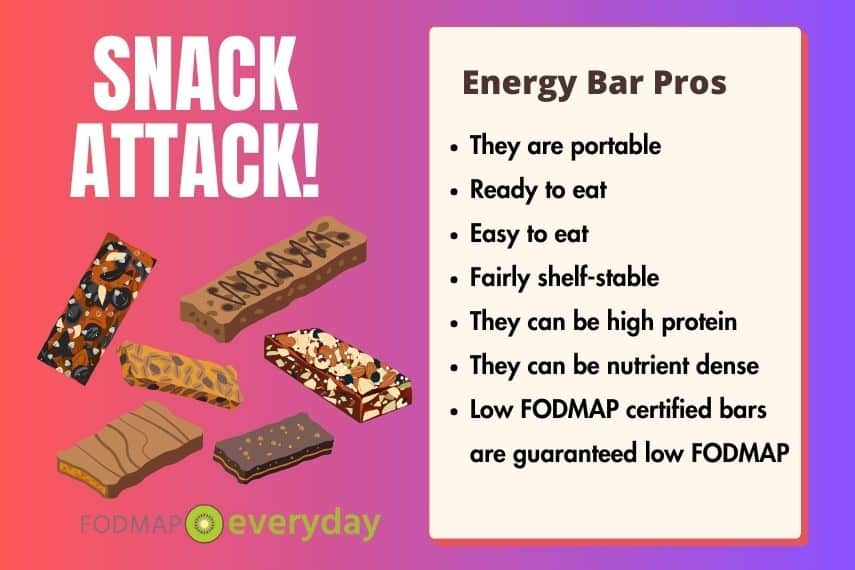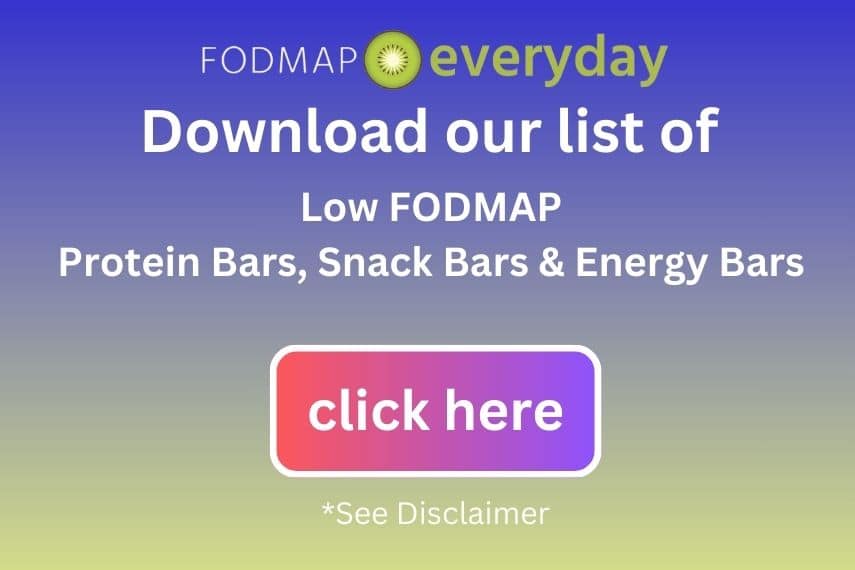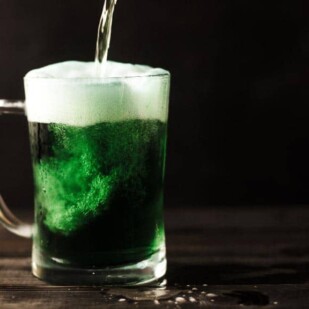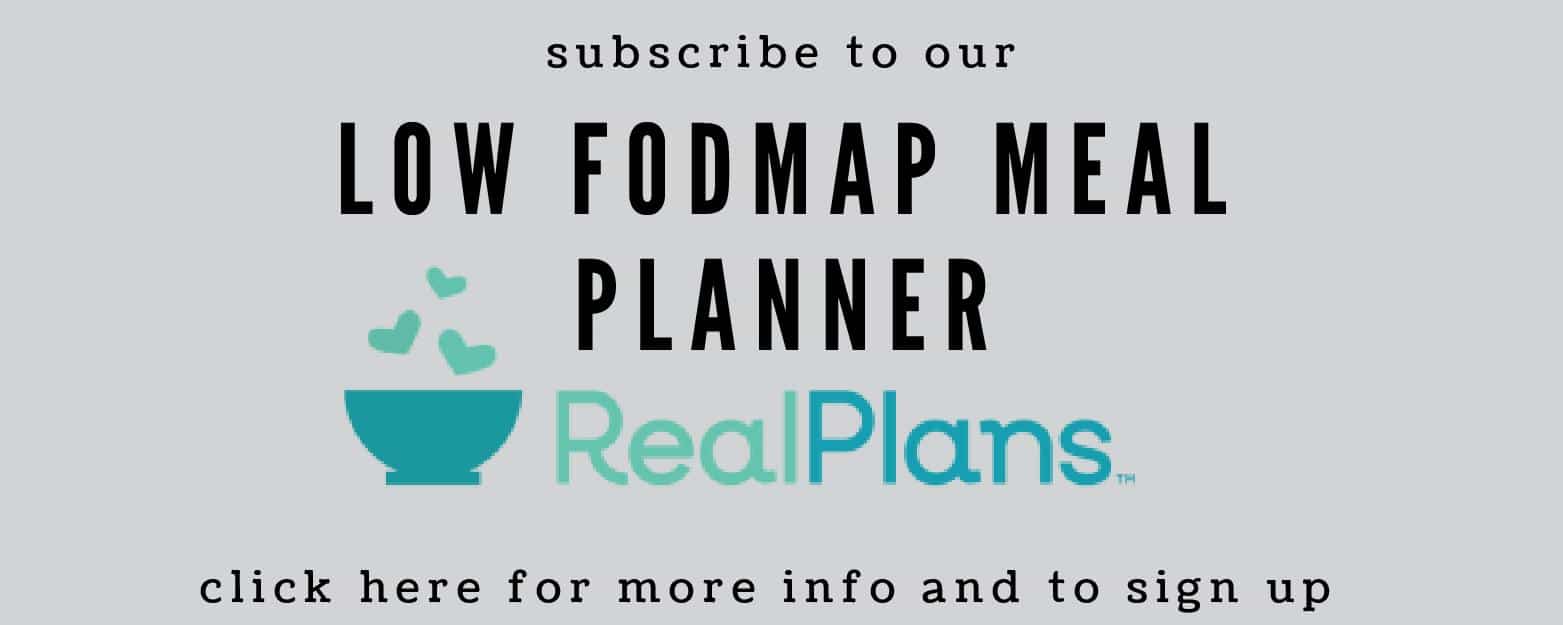We heard you loud and clear! You want to know How To Choose Low FODMAP Protein Bars, Snack Bars & Energy Bars! Snacking is part of our everyday life and now that we are following the low FODMAP diet there is more to consider than just taste. This article is an in-depth look at bars that are low FODMAP diet compliant – there are even 80+ that are lab tested and certified low FODMAP – and over 100 curated bars total!

Looking for a low FODMAP breakfast bar? A low FODMAP bar without nuts, or one that is super crunchy, or chewy? We have broken down all the categories for you. Use the Table of Contents below to help you navigate this article.
- Low FODMAP Energy Bars: Snack Bar vs. Protein Bar
- Downloadable List of 100+ Low FODMAP Protein Bars, Snack Bars & Energy Bars
- When To Eat A Low FODMAP Protein Bar, Snack Bar, or Energy Bar
- Low FODMAP Energy Bar Pros & Cons
- Read Those Protein Bar & Snack Bar Labels!
- Lab Certification: Monash University, FODMAP Friendly & Rachel Pauls
- How To Choose The Right Low FODMAP Protein Bar & Snack Bar For You
- Certified Low FODMAP Energy Bars with High Carb Count
- Certified Low FODMAP Energy Bars with High Protein
- Low FODMAP High Fiber Energy Bars
- Low FODMAP Low Carb Energy Bars
- Low FODMAP Nut-Free Energy Bars
- Low FODMAP Breakfast Bars & Meal Replacement Bars
- Low FODMAP Crunchy Energy Bars
- Low FODMAP Chewy Energy Bars
- Low FODMAP Soft Energy Bars
- Frequently Asked Questions
- List of Lab Tested Certified Low FODMAP Energy Bars
- The Takeaway
We have divided our initial discussion into defining the different kinds of bars you will find on the market: snack bars and high protein bars.
Low FODMAP Energy Bars: Snack Bar vs. Protein Bar
While many people use the terms snack bar, energy bar and protein bar interchangeably, they are actually different products. We use “energy bar” as the catchall term, with snack bars and protein bars being types of energy bars.
First of all, calories are a unit of energy. Calories refer to the energy people get from the food and drink they consume, as well as the energy they use in physical activity, and many people are looking at a snack bar for energy! But depending on your needs, one bar might be more appropriate than another.
What Is a Snack Bar?
A snack bar is often higher in sugars and carbs. Sometimes they can even verge on being candy-like (like Fody Dark Chocolate Nuts & Sea Salt Bar), or more like a baked-good or brownie/bar hybrid (like Belliwelli). Not that there is anything wrong with that! We just want you to know what you are eating.
Our downloadable list of 100+ low FODMAP bars is the most comprehensive anywhere. You can see, at a glance, which bars are Gluten-Free, Dairy-Free, Lactose-Free, Vegan, Organic; which contain Prebiotics or Probiotics; the Protein Source, and Sweetener used; amounts of Calories, Carbs, Protein, Fat, and Fiber; their Texture; and whether they are Certified Low FODMAP.
What Is a Protein Bar?
Protein bars are typically higher in protein, but after our own research and a conversation with a FDA representative, our eyes were opened. Here is what we learned:
- There are bars with the word protein in the name that have less protein than others that do not.
- The FDA makes a distinction between a bar that says it simply contains or provides protein, and one that specifically says it is “high protein” or is “a good source of protein”.
- The recommended amount of protein for an adult is .8 g protein per kg of weight, or .36 g per pound, which comes to 46 grams per day for the average sedentary woman, and 56 grams per day for the average sedentary man. 51 g is the average.
- According to the FDA, a bar that simply “provides protein” should contain 10% – 19% of the recommended daily intake of protein; this would be 5.1 g to 9.7 g of protein per bar.
- A bar that touts itself as “high protein” or a “good source of protein” must provide at least 20% or more of the recommended daily intake of protein; this would be 10.2 g per serving.
- There are bars that exceed the 20% requirement and are truly “high protein”.
- If the word “protein” is part of the brand name, such as Joe’s Protein Bars (this is a made-up example) then the FDA requirements for protein in a bar do not apply.
- There are bars that use the term “protein” on their packaging that are not “high protein” according to FDA regulations. Buyer beware!
Downloadable List of 100+ Low FODMAP Protein Bars, Snack Bars & Energy Bars
We had to create a download, because we have curated over 100 low FODMAP bars for you! You can see, at a glance, which are Gluten-Free, Dairy-Free, Lactose-Free, Vegan, Organic; which contain Prebiotics or Probiotics; the Protein Source, and Sweetener used; amounts of Calories, Carbs, Protein, Fat, and Fiber; their Texture; and whether they are Certified Low FODMAP.
This is the most comprehensive list of low FODMAP bars anywhere!
Low FODMAP Protein Bar, Snack Bar & Energy Bar Chart Key
Key: Green means YES for that particular column, red means NO. The designations for Gluten-Free (GF), Dairy-Free (DF) and Vegan are as reported by the manufacturer. Bars listed in blue are temporarily or permanently unavailable, or were lab tested and certified at one point, but the manufacturers decided not to continue their relationship with the certifying body. This could mean that the bars are exactly the same as when they were certified, or not. All these “blue” bars but have been included for educational purposes (more on that below).
*Disclaimer: Lab tested and certified bars are guaranteed low FODMAP at the serving sizes suggested. The additional bars listed are considered to likely be low FODMAP, due to a review of their ingredients based upon the science put forth by Monash University and FODMAP Friendly, as of the publication of this article. There is no substitution for lab testing. Eat to your tolerances. In addition, ingredients change, label reading is always recommended, and just because a bar is low FODMAP does not guarantee you will not experience negative digestive symptoms.
When To Eat A Low FODMAP Protein Bar, Snack Bar, or Energy Bar
Regular nutritious meals are good for everybody, and that includes those following the low FODMAP diet, but hardly a day goes by when we don’t need some sort of snack. Here are the times that seem to demand snacking the most and when a bar could be a handy choice:
- Mid-morning or mid-afternoon slump.
- Pre– or post-workout.
- On a busy day when you “forget” to eat breakfast or lunch. We know you all search for low FODMAP “breakfast bar”! PS: We have a recipe for you – our Low FODMAP Breakfast Bar!
- When you are rushing from one appointment to another, and you need sustenance.
- When your blood sugar tanks, and you need to dive into your pocket or bag for something NOW.
- As an occasional meal replacement.

Low FODMAP Energy Bar Pros & Cons
As with anything, there are pros and cons. Let’s look at what energy bars give us:
Low FODMAP Energy Bar Pros:
- They are portable
- Ready to eat
- Easy to eat
- Fairly shelf-stable
- They can be high protein
- They can be nutrient dense
- Low FODMAP certified bars are guaranteed low FODMAP
Low FODMAP Energy Bar Cons:
- Most are highly processed
- They can be pricey
- Some are high in fat and sugar, which might not be a FODMAP issue, but could be undesirable for other reasons
- High FODMAP ingredients can be hard to decipher on some labels
- Label language can be misleading, especially when it comes to protein
Read Those Protein Bar & Snack Bar Labels!
You have to be a label reader when following the low FODMAP diet. Ingredients are listed in order of amount, by weight, from greatest amount to least.
Please note that some labels list high FODMAP ingredients, but they might be in small amounts, far down on the label order. Some labels might even say, “contains 2% or less” and then go on to list ingredients.
It is our Success Team dietitians’ opinions that if an ingredient is present in less than 2% it is unlikely to cause IBS distress. This doesn’t mean it is guaranteed to not trigger symptoms, but you can try products, such as the MariGold bars listed in our PDF, when you are stable. They contain chicory root, but it is less than 2%.
How We Chose Bars to Include
Disclaimer: Lab tested and certified bars are guaranteed low FODMAP at the serving sizes suggested. The additional bars listed are considered to likely be low FODMAP, due to a review of their ingredients based upon the science put forth by Monash University and FODMAP Friendly, as of the publication of this article. There is no substitution for lab testing. Eat to your tolerances. In addition, ingredients change, label reading is always recommended, and just because a bar is low FODMAP does not guarantee you will not experience negative digestive symptoms.
The bars in our downloadable list of over 100 bars include lab tested and certified low FODMAP bars, and also bars that have been reviewed by Monash trained dietitians and are considered worth trying while following the low FODMAP diet.
We have chosen to keep some bars listed that are not available at this time, which might seem like an odd choice. We have chosen to do this for two main reasons: 1) Certain flavors come and go within a brand’s offerings, and 2) We think there is a lot to learn from labels and ingredients. Note that these items that are unavailable at this time (some permanently, some temporarily), are clearly labeled in bright blue on our chart. See the key that accompanies the download.
For instance, Enjoy Life is no longer offering their lab tested and certified low FODMAP Breakfast Ovals, but by viewing in the download, you can see that they contained fig paste and date paste. These ingredients would often be considered high FODMAP. We see people over-restricting every single day, and this is not healthy for their gut health long term, or for them psychologically. By retaining this ingredient info, we hope that it helps educate people to the fact that the low FODMAP diet is very serving size dependent. Remember, it is “low” FODMAP, not “no” FODMAP.
Knowing that a small amount of date paste was in a certified low FODMAP product can help you make decisions when you are faced reading a label of a new product on your own.
Rest assured that the great majority of the low FODMAP protein bars and low FODMAP energy bars we have listed are available (although not all are available worldwide).
Ingredients To Watch Out For
While we have brought you a downloadable list with over 100 bars that have been vetted, we also want to educate you so that you can make your own decisions while shopping.
Here is a list of some ingredients that can be problematic while following the low FODMAP diet:
- Agave – unless sugar content on label is 5 grams or less per serving per Monash recommendations
- Cashews – found in many bars in large amounts
- Chicory root
- Erythritol – Erythritol is within several lab tested certified low FODMAP products, but the testing certification bodies have not told anyone what the low FODMAP serving size is. Erythritol is different from other sugar alcohols in that is is digested before it reaches the colon. Individual tolerance will of course vary. Please see section on sweeteners, below.
- Fava beans, also known as faba beans and broad beans
- Fructooligosaccharide
- Fructose
- Fructose-glucose
- Fruits: In the form of dried fruit, juice concentrates & purées, watch out for: apples, cherries, dates, figs and mango in particular as they are used in many bars. The exception is if they are within a lab tested and certified bar.
- High fructose corn syrup (HFCS)
- Honey – unless sugar content on label is 7 grams or less per serving per Monash recommendations
- Inulin
- Lactose
- Milk protein
- Milk protein concentrate
- Monk fruit: Monk fruit is within many lab tested and certified low FODMAP products, but the testing certification bodies have not told anyone what the low FODMAP serving size is. Please see section on sweeteners, below.
- Nonfat dry milk
- Oligosaccharides
- Pistachios
- Raisins & Raisin Juice Concentrate – raisins are low FODMAP in amounts of 13 g, as assessed by Monash, and 30 g as assessed by FODMAP Friendly, but a raisin juice concentrate amount is hard to determine in a bar
- Soybeans
- Soy flour
- Soy protein concentrate
- Sugar Alcohols – Maltitol, Mannitol, Sorbitol, Xylitol. Erythritol is in many lab tested and certified low FODMAP products, and is considered to not be as much of a digestive issue.
- Whey
- Whey protein concentrate
Sweeteners in Low FODMAP Energy Bars
Hopefully by now you have seen that there is a large variety of low FODMAP protein bars and energy bars. Some of them are as sweet as a candy bar, which could be what you were looking for. You will find a variety of sweeteners used in low FODMAP bars.
Please review our article, Explore an Ingredient: Sugar.
Here is some information about sweeteners found in our curated low FODMAP energy bars:
- Allulose – This is a sugar substitute that has been lab tested and certified by FODMAP Friendly under the Rx Sugar brand name.
- Brown Rice Syrup, Rice Syrup, Rice Malt Syrup – these terms are interchangeable. Contain no FODMAPs per lab testing by Monash.
- Brown Sugar – Monash has varied in their statements over the years from “no FODMAPs”, to not mentioning any high limit, to FODMAP Friendly showing a very low fructose content, and generous serving sizes.
- Cane Syrup – This is liquid sugar made from sugar cane (which is what most white sugar is made from) and is low FODMAP.
- Coconut Sugar – Coconut sugar has been lab tested by both Monash and FODMAP Friendly with low FODMAP results varying in lab tests from 4 g to 44 g.
- Coconut Nectar – Neither Monash nor FODMAP Friendly have lab tested this sweetener as a line item, so we do not know the exact low FODMAP amount.
- Corn Syrup – Not the same as high fructose corn syrup (HFCS). Corn syrup is low FODMAP. Read our article, Corn Syrup vs. High-Fructose Corn Syrup.
- Erythritol – This is a sugar alcohol that is digested differently than others, and is tolerated by many with IBS. It is within several lab tested and certified products, but an exact low FODMAP serving size has not been reported.
- Golden Syrup – Monash University has lab tested golden syrup and it has a low FODMAP serving size of 1 teaspoon (7 g). FODMAP Friendly lab tests say a low FODMAP serving is up to 3 teaspoons (21 g).
- Glucose – Also known as glucose syrup, and confectioner’s glucose, it is a liquid sweetener made from the hydrolysis of starch, often corn, but also from potatoes, wheat, and less commonly from barley, rice or cassava.
- High Fructose Corn Syrup – This is a liquid sweetener where fructose is in excess of glucose and therefore it is high FODMAP. Read our article, Corn Syrup vs. High-Fructose Corn Syrup.
- Honey – Honey has a low FODMAP serving size up to 1 teaspoon (7 g), depending on the type of honey.
- Maltitol – This is a sugar alcohol (polyol) that is generally considered high FODMAP, but as with ANY ingredient, the serving size counts. It is within a bar lab tested and certified low FODMAP.
- Maple Sugar – We do not know the exact FODMAP content of maple sugar. The presumption, given the no/low FODMAP nature of maple syrup, is that it is very low FODMAP.
- Maple Syrup – Monash has varied in their statements over the years from “no FODMAPs”, to not mentioning any high limit, to FODMAP Friendly showing a very low fructose content, and generous serving sizes.
- Molasses – Both Monash and FODMAP Friendly have lab tested molasses and it has a low FODMAP serving up to 1 teaspoon (5 g).
- Monk Fruit – Monk fruit and its derivatives are within several lab tested and certified products, but an exact low FODMAP serving size has not been reported.
- Stevia – Stevia has been lab tested by Monash and has a low FODMAP serving size of 2 teaspoons (5 g).
- Tapioca Syrup – Tapioca syrup is within several lab tested and certified products, but an exact low FODMAP serving size has not been reported.
- White Sugar – contains no FODMAPs at all.
Non-Nutritive Sweeteners
The following information was compiled by our FODMAP trained dietitians:

Non-nutritive sweeteners are sugar substitutes that have a low-calorie content and are usually several hundred thousand times sweeter than regular white sugar. Their consumption is growing because of their low-calorie content and the health concerns about products with high sugar content.
They include synthetic sweeteners such as acesulfame K, aspartame, cyclamate, saccharin and sucralose as well as natural sweeteners like monk fruit and stevia. Although non-nutritive sweeteners are considered low FODMAP, their effects on glucose intolerance, the activation of sweet taste receptors, and alterations to the composition of the intestinal microbiota are controversial. According to studies, saccharin (found in Sweet’N Low and SugarTwin), sucralose (found in Splenda) and stevia have been found to change the composition of the gut microbiota.
While it is possible that this might cause glucose intolerance and dysbiosis, more human studies are needed. It is also interesting to know that only 15% of the consumed saccharin reaches the colon, compared to 85% for sucralose, so saccharin needs to be consumed in large amounts to potentially alter the gut. Also, sucralose is not metabolized by intestinal bacteria, while stevia directly interacts with the intestinal microbiota and needs bacteria to be metabolized, so stevia might cause greater alteration to the bacterial population in the gut.
Since we still don’t know how exactly saccharin, sucralose, stevia and monk fruit affect gut health, especially long term, and that there is a possibility that they can negatively impact it, it is preferable to use caution and consume those sweeteners in moderation, even if they are considered low FODMAP.
Always eat to your own tolerance.
To brush up on how to make low FODMAP protein bar and low FODMAP snack bar choices, please review these articles:
- How To Read a FDA Nutrition Facts Label
- How To Decipher “Natural Flavors” & “Spices” on Food Labels for the Low FODMAP Diet
- How To Read a Low FODMAP Certified Food Product Label
- How To Read Food Labels For the Low FODMAP Diet With Confidence
Lab Certification: Monash University, FODMAP Friendly & Rachel Pauls
THIS IS IMPORTANT! Hence the caps. There are many lab tested and low FODMAP certified bars such as BelliWelli, Fody, and others. If a bar is certified it is guaranteed to be low FODMAP in the serving sizes recommended. Period.
The reason why manufacturers spend the money on certification is to bring you this low FODMAP assurance.
The reason we point this out is because you might see bars that contain apple juice concentrate (Fody), dates (Enjoy Life), or coconut sugar (GoMacro) or other ingredients that you might know of as “high FODMAP”, and yet the bars are low FODMAP certified.
This is because the diet is very much related to portions. Please review our article, High FODMAP Foods With Low FODMAP Serving Sizes, for more info.
You are probably aware that Monash University & FODMAP Friendly have certification programs and the products that they lab test and certify are listed on their sites and apps. The Rachel Pauls’ brand lab tests their products for FODMAPs and certifies their low FODMAP status as well.
You May Want To Read: Dr. Rachel Pauls: The Woman Behind The Brand
How To Choose The Right Low FODMAP Protein Bar & Snack Bar For You
The right bar for you might not be the right bar for me, and you also might have different needs at different times, so this is not an easy question to answer. Here are the sub-categories that you are looking for, at a glance: high carb, high protein, high fiber, low carb, crunchy, chewy, and soft texture.
Certified Low FODMAP Energy Bars with High Carb Count
If you are looking for a pre- or post-workout bar, then higher carbohydrates might be important to you. Exact amounts, and more bars, listed within download chart. These are just a sampling of choices.
- GoMacro Sunflower Butter + Chocolate 38 g
- GoMacro Mocha Chocolate Chip 37 g
- GoMacro Dark Chocolate + Almonds 37 g
- GoMacro Coconut + Almond Butter + Chocolate Chips 36 g
- GoMacro Peanut Butter 36 g
- GoMacro Banana + Almond Butter 35 g
- GoMacro Granola + Coconut 32 g
Certified Low FODMAP Energy Bars with High Protein
If you are looking for protein in particular, then the amount of protein per bar/serving will be of prime importance. Exact amounts, and more bars, listed within download chart. These are just a sampling of choices.
- Fodbods Peanut & Choc Chunk Bars 15.7 g (AU and NZ only)
- Fodbods Banana & Peanut Butter Bar 15.7 g (AU and NZ only)
- Fodbods Lemon & Coconut Bar 14.3 g (AU and NZ only)
- GoMacro Peanut Butter 11 g
- GoMacro Coconut + Almond Butter + Chocolate Chips 11 g
- GoMacro Banana + Almond Butter 11 g
Low FODMAP High Fiber Energy Bars
Low FODMAP energy bars with high fiber contain more than 6 g per serving. Exact amounts, and more bars, listed within download chart. These are just a sampling of choices.
- Caveman Chocolate Walnut Collagen Bar
- Simply Protein Chocolate Chip Cookie Bar
- Simply Protein Peanut Butter Cookie Bar
- Marigold Coconut Rage Protein Bar
- Aloha Coconut Chocolate Almond Plant-Based Protein Bar
- Aloha Chocolate Chip Cookie Dough Plant-Based Protein Bar
- Aloha Peanut Butter Chocolate Chip Plant-Based Protein Bar
- Aloha Chocolate Fudge Brownie Plant-Based Protein Bar
- Aloha Chocolate Mint Plant-Based Protein Bar
- Aloha Vanilla Almond Crunch Plant-Based Protein Bar
Low FODMAP Low Carb Energy Bars
Low FODMAP low carb bars have less than 20 g of carbs per serving. Exact amounts, and more bars, listed within download chart. These are just a sampling of choices.
- Go Macro Double Chocolate and Peanut Butter Mini
- Go Macro Peanut Butter and Chocolate Chip Mini
- Go Macro Sunflower Butter and Chocolate Chip Mini
- Go Macro Coconut Almond Butter Chocolate Chip Mini
- Go Macro Oatmeal Chocolate Chip Mini
- Go Macro Maple Sea Salt Mini
- Fody Almond Coconut Snack Bar
- Fody Dark Chocolate Nut and Sea Salt
- Fody Peanut Butter Quinoa
- Epicured Mocha Espresso Energy Bites
- Epicured Peanut Butter & Chocolate Energy Bites
- Epicured Almond & Cranberry Energy Bites
- Epicured Lemon Coconut Energy Bites
- Fod Bods Mint Chocolate Bar
- Health Warrior Pumpkin Seed Chocolate Coconut
- Epic Bacon + Pork Bar
Low FODMAP Nut-Free Energy Bars
Many of you are looking for nut-free. Exact amounts, and more bars, listed within download chart. These are just a sampling of choices.
- 88 Acres Dark Chocolate Sea Salt Bar
- 88 Acres Double Chocolate Mocha Seed Bar
- 88 Acres Cinnamon & Oats Seed Bar
- 88 Acres Dark Chocolate Brownie Protein Bar
- 88 Acres Banana Bread Protein Bar
- Go Macro Maple Sea Salt Mini
- Go Macro Sunflower Butter + Chocolate
Low FODMAP Breakfast Bars & Meal Replacement Bars
Many of you are looking for a low FODMAP breakfast bar, or a bar to take the place of a meal. We want to encourage all of you to focus on eating proper meals, made with whole foods, but we do understand that every now and then you want a bar to tide you over. The best bars for this purpose will have a ratio of approximately 40% carbs, 30% protein, and 30% fat to keep you full and leave you satisfied.
We expanded our search for prepared bars that were within 2% on either side of the target numbers (in other words, 38% to 42% for carbs, etc.) and none of the low FODMAP bars that we have assessed fit the parameters.
These are the bars that came closest (numbers are rounded). Someone should make a low FODMAP meal replacement bar! Exact macro amounts, and more bars, as always, listed within download chart.
- Simply Protein Chocolate Chip Cookie Bar (46% carbs/21% protein/43% fat)
- Simply Protein Peanut Butter Cookie Bar (42% carbs/20 % protein/50% fat)
Low FODMAP Crunchy Energy Bars
Sometimes you want the satisfaction of a crunchy energy bar! Here you go. Exact amounts, and more bars, listed within download chart. These are just a sampling of choices.
- Fody Almond Coconut Snack Bar
- Fody Dark Chocolate Nut and Sea Salt
- Fody Peanut Butter Quinoa
- Nature Valley Peanut Butter Crunchy Granola Bar
- Nature Valley Pecan Crunchy Granola Bar
- Nature Valley Maple Brown Sugar Granola Bar
- Nature Valley Cinnamon Crunchy Granola Bar
- Nature Valley Roasted Almond Crunchy Granola Bar
Low FODMAP Chewy Energy Bars
If you are looking for a low FODMAP chewy energy bar, here are a few for you! Exact amounts, and more bars, listed within download chart. These are just a sampling of choices.
- Aloha Coconut Chocolate Almond Plant-Based Protein Bar
- Aloha Chocolate Chip Cookie Dough Plant-Based Protein Bar
- Aloha Peanut Butter Chocolate Chip Plant-Based Protein Bar
- Aloha Chocolate Fudge Brownie Plant-Based Protein Bar
- Aloha Chocolate Mint Plant-Based Protein Bar
- Aloha Chocolate Espresso Plant-Based Protein Bar
- Aloha Vanilla Almond Crunch Plant-Based Protein Bar
- GoMacro Mocha Chocolate Chip
- GoMacro Dark Chocolate + Almonds
- GoMacro Coconut + Almond Butter + Chocolate Chips
- GoMacro Granola + Coconut
- GoMacro Banana + Almond Butter
- GoMacro Peanut Butter
- Junkless Chocolate Chip
- Junkless Peanut Butter Chocolate Chip
- Junkless Cinnamon Roll
- Junkless 100% Real Strawberry
Low FODMAP Soft Energy Bars
Low FODMAP soft energy bars have the texture of your favorite brownie. Exact amounts, and more bars, listed within download chart. These are just a sampling of choices.
- BelliWelli Crunchy Peanut Butter Chocolate
- BelliWelli Fudge Brownie
- BelliWelli Chocolate Chip
- BelliWelli Cinnamon Swirl
- BelliWelli Strawberry Shortcake
- BelliWelli Birthday Cake
Our downloadable chart brings you the information you need to make the right decision for you.
Frequently Asked Questions
If a bar is lab-tested and certified low FODMAP by either Monash, FODMAP Friendly or Rachel Pauls, then the serving size has been assessed for you.
If a bar has not gone through the Monash, FODMAP Friendly or Rachel Pauls certification then it is up to you to assess a proper serving size for, which will be individual (as all FODMAP servings are).
Please review our articles, What If A Food Has Not Been Lab Tested? and Ask The Right Question: Is It Low FODMAP Vs. Can I Tolerate This?
Do not assume that 1 whole bar is a “serving size” per the nutrition label. Some of these brands set a serving size at two bars (Nature Valley), while others (I am looking at you, Bobo’s) set a serving size at half a bar/package for some of their offerings. Read. Read. Read.
We have assembled our downloadable list using information direct from the manufacturers of the individual products. Please note that we have found contradictory information and also, since the products originate in different countries, they are not all under the same governmental rules and regulations for their labeling and declarations.
For instance, we found bars that are labeled as vegan, but “milk products may be present”.
There are bars that claim, “no added sugars”, yet they have stevia on the ingredient label. While stevia is considered a non-nutritive sweetener and not a “sugar”, this is not understood by all consumers.
We understand that this can make it confusing for the consumer, but as they say, don’t shoot the messenger. If you have questions about a particular product, please address your queries with the manufacturer directly.
As you probably know by now FODMAPs are carbohydrates and therefore pure fats and proteins do not contain FODMAPs. Pea protein is a protein, and it is found in many processed products including many energy bars. But the issue is that it is a processed protein, and some pea protein seems to be purer than others, meaning they have a much better protein content profile, while others have carbohydrates – and possible FODMAPs – lurking.
We have an in-depth article for you to read called Is Pea Protein Low FODMAP? which we encourage you to read.
The takeaway on pea protein is that there are protein bars and energy bars that contain pea protein that have passed lab testing and low FODMAP certification, and at the same time, we hear anecdotally (quite frequently) that processed pea protein does not agree with everyone. As always, eat to your own tolerance.
While many fibers can be a high FODMAP red flag, we have seen several products that are lab tested and certified low FODMAP that contain “soluble tapioca fiber”.
The problem with this ingredient, and with isomalto-oligosaccharides, according to research and our RDs, is that unless we know how these ingredients are manufactured, we do not know much about their digestibility. Some processing can apparently leave them more digestible from a low FODMAP perspective, but not all processing will have this result.
Our suggestion is that if you see soluble tapioca fiber or isomalto-oligosaccharides on a label that you make a note, try the bar, and see how you do. The exception of course is if the bar has been lab tested and certified, in which case you have the guarantee that the bar is low FODMAP – but not necessarily that you will not experience IBS triggers.
By the way, soluble tapioca fiber is considered a prebiotic.
This can be confusing. If a product has been certified as organic, we have reported it as such, however, there are bars that have many organic ingredients, and yet they do not have an organic certification. In this case we have not labeled them as “organic” as they have not for themselves, either. As always, read labels.
No, not all paleo ingredients are low FODMAP.
No, not all gluten-free ingredients are low FODMAP.
Our downloadable list has a vegan column! We have dozens of low FODMAP vegan bars to share with you. We are partial to several of the GoMacro Bars.
Yes, there are several low FODMAP Go Macro Bars that have been lab tested and certified. We list them clearly in our downloadable list. Please do take a look, because not all Go Macro Bars are low FODMAP.
The Kind Bars that we have seen at this time contain chicory root, as well as other high FODMAP ingredients.
The Kind Bars that we have seen at this time contain chicory root, as well as other high FODMAP ingredients.
There are many flavors of RX Bars, and some could be considered low FODMAP, if you look at Monash University as well as FODMAP Friendly lab testing.
According to FODMAP Friendly, which has reputable lab testing, cashews have a low FODMAP serving of 6, and dates have a 5 piece low FODMAP serving size, with Medjool dates an even larger serving size. So, for instance, the Chocolate Sea Salt RX Bar contains 3 egg whites, 6 almonds, 4 cashews and 2 dates, along with chocolate, cocoa, natural flavors, and salt. It very well could be low FODMAP at maybe half a bar. Ditto with the Chocolate Peanut Butter.
We know many people who tolerate these bars well. We look at these as more of a “will-I-tolerate-this” questions, rather than an “is-this-low-FODMAP”? Read labels; know your tolerances.
Please read our articles, Ask The Right Question: Is It Low FODMAP or Can I Tolerate This?, and also, When Monash University and FODMAP Friendly Low FODMAP Lab Test Results Differ.
The Built Bars that we have seen at this time contain dairy, as well as other potentially high FODMAP ingredients.
Some 88 Acre Bars have low FODMAP serving sizes. Please refer to our downloadable list.
The Quest Bars that we have seen at this time contain potentially high FODMAP ingredients, and ingredients that can trigger IBS symptoms.
The think! Bars that we have seen at this time contain maltitol, as well as other potentially high FODMAP ingredients.
Some Nature Valley Granola Bars are low FODMAP and are detailed in our downloadable list.
The Lara Bars that we have seen at this time contain many ingredients that can form a FODMAP stacking situation.
Most Epic bars are not low FODMAP. You have to read labels; many contain garlic and onion powder. The EPIC Uncured Bacon Protein Bars are low FODMAP.
New bars – protein, snack bars, high carb, etc. – are coming to market all the time. Let us know of you find one that is low FODMAP, or if you would like us to take a look at the ingredients.
List of Lab Tested Certified Low FODMAP Energy Bars
Below is a list of JUST SOME of the bars that have been lab tested and certified low FODMAP by Monash University, FODMAP Friendly or Rachel Pauls.
Please note that some of these products are only available in the U.S., AU or UK.
For a complete list of low FODMAP bars – over 100! – please download our PDF . That document also gives you further information than the list directly below such as gluten-free, lactose-free, dairy-free, vegan and organic status, as well as whether any prebiotics or probiotics are added, in addition to protein source, sweeteners used, calories, protein, carbs, sugars, fat, fiber and texture description.
Some of these products are available only in select markets (U.S. or Australia)
- BelliWelli Fudge Brownie
- BelliWelli Lemon White Chocolate
- BelliWelli Minty Chocolate
- BelliWelli Cinnamon Swirl
- Carman’s Super Berry Muesli Bars
- Carman’s Original Fruit Free Muesli
- Carman’s Dark Chocolate Nut Espresso Bars
- Epicured Mocha Espresso Energy Bites
- Epicured Peanut Butter & Chocolate Energy Bites
- Fodbods Mint Chocolate Bar
- Fodbods Peanut & Choc Chunk Bars
- Fodbods Lemon & Coconut Bar
- Fody Almond Coconut Snack Bar
- Fody Blueberry Almond Bar
- Fody Dark Chocolate Nuts & Sea Salt Bar
- Fody Peanut Butter Chocolate Quinoa Bar
- Food for Health Fruit Free Bar with Almond & Chia
- Food for Health Fruit Free Bar with Sea Salt & Caramel
- GoMacro Sunflower Butter + Chocolate
- GoMacro Mocha Chocolate Chip
- GoMacro Dark Chocolate + Almonds
- GoMacro Granola + Coconut
- Go Macro Peanut Butter Chocolate Chip Mini
- Go Macro Sunflower Butter + Chocolate Chip Mini
- Go Macro Coconut Almond Butter Chocolate Chip Mini
- Go Macro Maple Sea Salt Mini
- Rachel Pauls Happy Bars Banana Chocolate Glee
- Rachel Pauls Happy Bars Oatmeal Raisin Bliss
- Rachel Pauls Happy Bars Orange Chocolate Ecstasy
- Bobo’s Original Oar Bar
- Bobo’s Lemon Poppyseed Bar
- Bobo’s Chocolate Chip Oat Bites
- Bobo’s Coconut Almond Butter Stuff’d Oat Bar
The Takeaway
If you are following the low FODMAP diet and want a protein bar, snack bar, or energy bar, we have over 100 curated and vetted bars from which to choose. Over 80 of them are lab tested and certified low FODMAP. As always, eat to your own tolerances.
If you are stable and in your Challenge Phase, why not branch out and try something new? Whether you have a hankering for chocolate, something fruity, nutty, soft-baked, chewy, crunchy, whey-based, or high-fiber there is a low FODMAP protein or low FODMAP energy bar for you.
Do you have a favorite low FODMAP energy bar? Let us know below!






